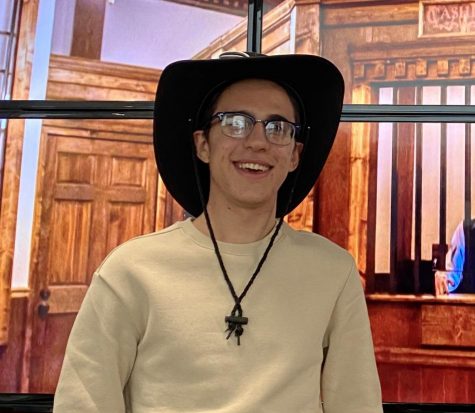
College Preparatory Mathematics (otherwise known as CPM) is a math-oriented program that aims to prepare students for college level mathematics, through engaging them in problem-based lessons structured around core ideas, guidance provided by knowledgeable teachers, students interacting in groups, and spreading practice of concepts through a longer period of time. That is the mission statement that can be found on the CPM website.
In the very simplest form, it is a great plan and makes a lot of sense, because students working in groups to solve problems, with teachers only serving as facilitators, seems perfect.
But sadly, it isn’t that simple.
CPM is not a program that is favored by a lot of students that are in lower math levels, and for students that are in higher levels of math, it has mixed results, with some kids finding it beneficial and some struggling to be successful.
The way CPM works in a classroom is that students are usually split into groups of four, including a task manager, recorder/reporter, facilitator, and a resource manager. The teacher reviews the core concept and leaves the group of students to solve a small number of problems that increase in difficulty. The whole functionality of this method relies on at least one of the four students understanding the information provided and being able to share it with the group. However, this method simply does not work and is idealistic.
As a student who has been in the CPM program from Precalculus to AP Calculus BC, the class environment has not worked like that idealistic model provided above. There are usually one or two groups that do not have a single student who understands the concept. Most usually, there are three to four students in the class who are mathematically talented and understand all the concepts at hand, but those are usually the students who cannot communicate efficiently with other students.
I have struggled in math for the past three years and have been in groups with people that have understood the subject, but they simply cannot explain their thinking. This isn’t their fault, because it is not their job to explain how to solve the problems.
CPM is not a program that benefits students, especially ones like me who haven’t been in the program for very long. It results in a lack of communication and more confusion.
While my own experiences have been in higher-level CPM classes, where opinions are mixed, I have also tutored many students in lower math classes and that is where the flaws of CPM are most apparent. I’ve had multiple clients that simply do not understand the long and complicated word problems presented in the textbooks. Some students complain that some lessons were taught too quickly, and there are holes in their mathematical knowledge that make it very difficult to understand harder concepts.
We exist in an education industry where students are rushed from year-to-year to meet deadlines and aren’t presented with enough time and resources to absorb the material that is taught. A program such as CPM that tries to help students understand difficult concepts in short periods of time is simply time-consuming and chaotic, because it will either leave students confused or worn out.
Dr. David Klein, a mathematics professor at California State University Northridge, has published a paper on his fear that CPM, and programs like it, make it harder for students to grasp intricate math concepts.
In short Dr. Klein brings up that the whole program relies too much on students caring about math, aimless activities that in no way help simplify “high-order thinking projects”, and it heavily relies on calculators, which inevitably will lead to a “symbol manipulation” way of thinking. Students will just continuously make errors on their calculators until they get the right answer. Instead, he explains why direct instruction not only saves time but also helps further students’ mathematical knowledge.
Statistically speaking, Glendale High School (GHS) and Clark Magnet High School (CMHS), the two CPM schools in the Glendale Unified School District (GUSD) have been underperforming more than in previous years, compared to Hoover High School (HHS) and Crescenta Valley High School (CVHS), both of which are not CPM schools. GHS compared to HHS has been slacking behind by a small margin, but there are signs of Hoover slowly starting to display better performance in testing. CVHS has been outperforming all schools in the District for decades, especially in science and math. From these statistics we can see how the CPM program is not working here in our very own town. This is not the way to go in order to encourage an interest in math.
This all boils down to an underrepresentation of student voices in decision making for the programs we need and don’t need. Underrepresentation is a nice way to put it, because in reality students have no representation whatsoever and aren’t taken seriously by the adults at the Board of Education. CPM is not a program that students want, and most students take regular classes and struggle. The Board prefers higher placement class students because they bring in money for College Board, while the regular students are left to suffer academically.
We need more representation on the Board, not for the AP students, but for the school as a whole. Our student representatives have to understand what these students want and how to help the lower-level students feel more comfortable. Students have no unions or serious representation on the board and will never be able to, because that would not only hurt the education industry but also the programs they try to force on us. This has to stop.











